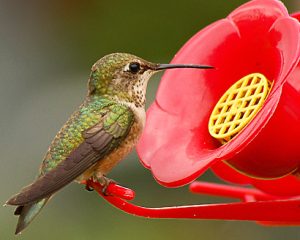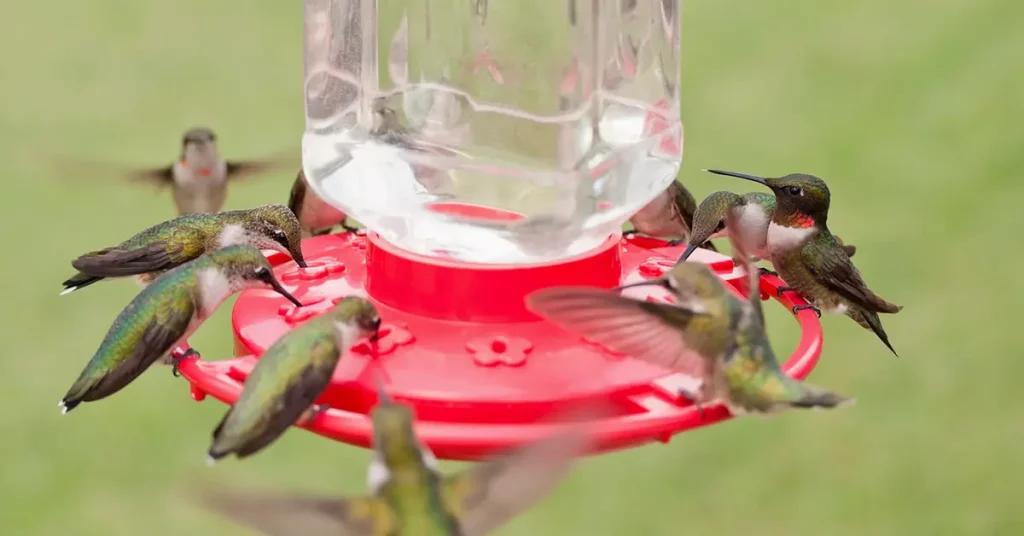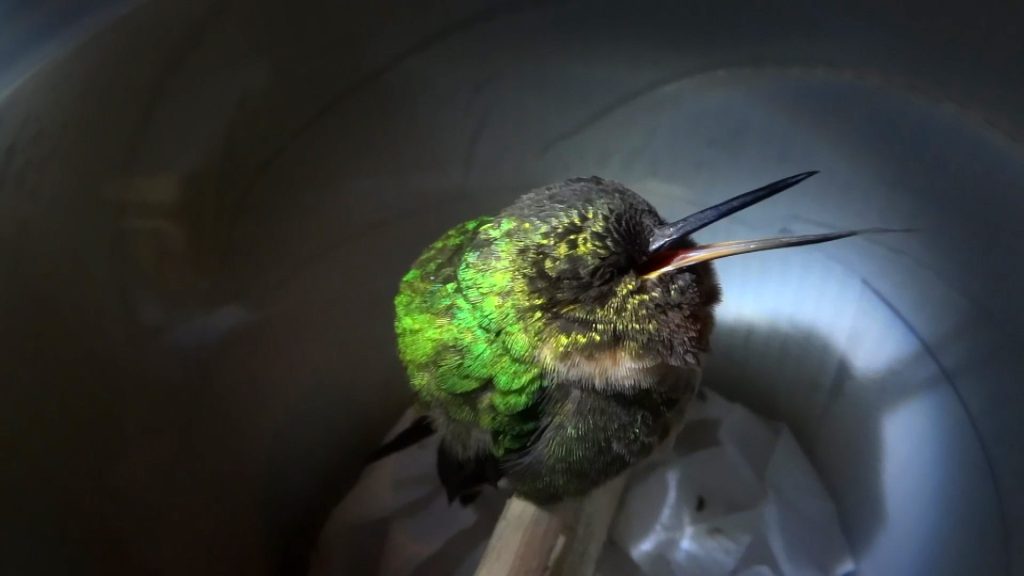How Long Can A Hummingbird Go Without Food? Starving Risks & Issues!

How long can a hummingbird go without food? Hummingbirds can survive only 3 to 5 hours without food in the daytime, whereas they can go up to 12 hours in a state of torpor or hibernation at night.
While maintaining the rapid wingbeat and dealing with an extreme metabolism rate, the hummingbird requires eating every 10 to 15 minutes. Also, the slight interruption of eating patterns collapses metabolic activity, impacts mobility, and decreases the reproduction rate.
If it continues for a few hours, severe starvation can lead to death. However, the metabolic rate reduces during torpor or hibernation, which helps these birds survive up to 12 hours without any supplies.
Confused about the survival mechanism of hummingbirds? Watch out for quick answers and plant flowers to provide good food sources to these migratory birds.
How Long Can A Hummingbird Go Without Food?
During the day, hummingbirds continuously eat nectar and bugs every 10 to 15 minutes. Due to the extreme metabolism rate, these birds require continuous eating to survive. If hummingbirds don’t eat for 3 to 5 hours, their metabolic activity collapses, which leads to a risk of starving to death.
On the other hand, hummingbird takes rest at night and naturally slow down its metabolism. In fact, the metabolic rate reduces by up to 95%, which allows the body to heal while sleeping.
Besides, Birdsidea states that birds consume far less energy as the demand decreases to half at night. If the energy demand decreases, they can spend more time resting and healing the body. So, the hibernation or torpor period can help the hummingbird to survive up to 12 hours without food.
How Long Can A Hummingbird Go Without Water

Hummingbirds consume nectar, tree sap, or insects in their diet, which are great water sources. As a result, these birds can survive up to several weeks without water.
Mainly, the water requirements depend on the diet and metabolic activity. Now, eating nectar or tree sap can maintain the water supply. Even the nectar has 70 to 80% water content that can handle the requirements.
If they face any scarcity of nectar, hummingbirds start to consume tree sap to handle the water crisis. These saps contain at least 3o to 40% water, which helps the birds survive longer. Hence, hummingbirds can go 4-5 weeks without a water supply.
Do Hummingbirds Require To Eat At Night?
No, Hummingbirds don’t require eating at night as they use the hibernation or torpor technique to reduce energy demand.
Due to the high metabolic rate and energy demand, hummingbirds eat continuously after every few minutes to survive. But these birds naturally slow their metabolism up to 95% at night. As a result, the body of the bird can heal while sleeping.
On top of that, the energy demand decreases to half, which doesn’t require regular eating at night. Hence, the torpor technique can help the hummingbird prevent food cravings until morning.
How Can Hummingbirds Conserve Energy?

To deal with high metabolic rates and energy demands, hummingbirds conserve energy through strategic feeding patterns, complex flying patterns, and torpor techniques.
Let’s start with the strategic feeding pattern of hummingbirds. These birds only consume energy-rich nectar sources, sugar-rich plant sap, or insects. Because of these high-energy meals, they get enough energy to deal with energy demands. Even the strategic feeding behavior helps to handle the long-distance migration.
According to Sean Ben, hummingbirds maintain an s-shaped pattern while flying, whereas other birds use straight flights. Due to the complex pattern, these birds use air currents and thermals to conserve energy. Also, the elastic tendons in wings can store and release energy for traveling longer distances.
Moreover, these birds naturally reduce metabolism to 95% at night using the hibernation or torpor technique. Hence, the bird’s body can heal and prevent the cravings for food until morning.
Further, they use body language and courtship displays to communicate instead of making calls like other birds. Overall, these behaviors help to conserve energy to meet the demand and primary activities.
What Source of Nutrition Hummingbirds Use?
Hummingbirds use nectar, tree sap, or insects as a source of nutrition. Now, nectar is an energy-rich source that provides carbohydrates, fats, and proteins. Besides, it has 70 to 80% water content that can handle the water requirements. Hence, regular nectar consumption gives enough energy to deal with daily demands.
In addition, Hummingbirds consume sugar-rich plant and fruit sap that ensure a balanced diet to stay healthy. Moreover, they eat insects rich in protein and low in carbohydrates. Even insects contain minerals to keep energy levels high. During the food crisis, these birds can eat small fruits like berries to fuel the drives.
How Food Scarcity Impacts Hummingbirds?
Food scarcity can use body fat, impact mobility, and decrease reproductive success rate. If hummingbirds don’t get food for hours, the stored body fat works to provide an energy source. As per Wildyards, the extreme collapses of body fat lead to a risk of death in cold temperatures.
When the hummingbirds are starving for hours, they reduce their mobility to conserve energy for longer. Besides, the flying pattern changes to use air currents and thermals while finding more favorable climates. In short, the starvation impact worst at the time of migration.
Further, the reproductive process faces issues due to insufficient food supply. If these birds don’t have an adequate food supply, they won’t go through the reproduction phase. Also, hummingbirds can’t care for their babies properly, which leads to death.
Warp Up
Hummingbirds can survive only 3 to 5 hours during the day, whereas they can go up to 12 hours in a torpor or hibernation state at night. But these birds can survive 4-5 weeks without a water supply as the nectar and tree sap can cover up the supply to handle water requirements.
These birds can conserve energy during food crises or long-distance migrations through strategic feeding, complex flying patterns, and torpor techniques. Still, the extreme crisis can collapse metabolic activity and impact mobility, leading to death!
